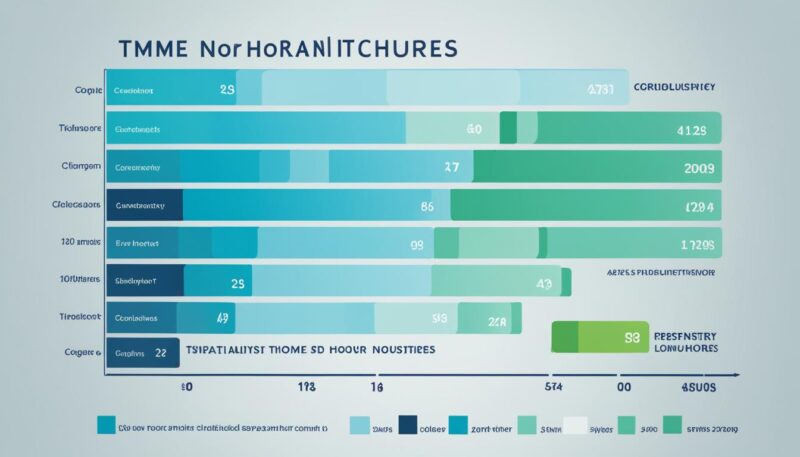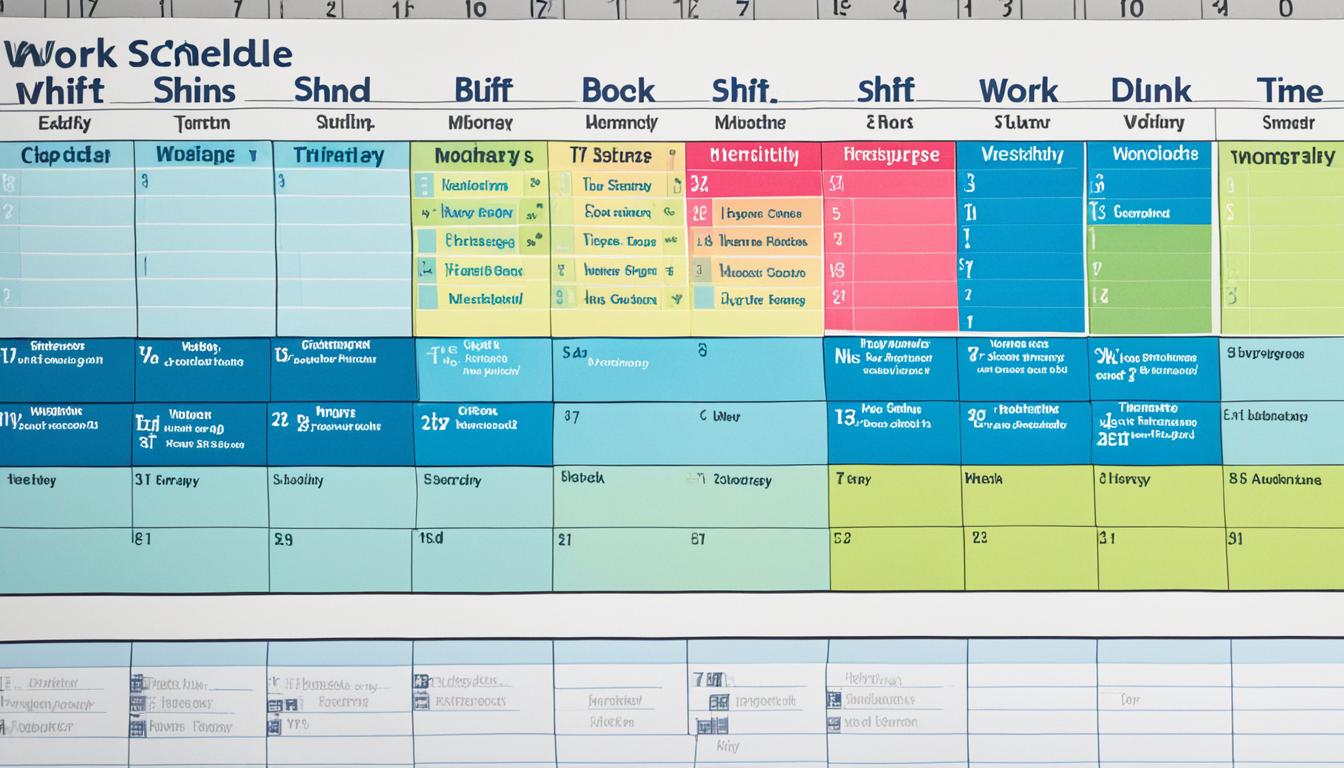The delineation of working hours for part-time roles is not just a matter of corporate policy but one that carries legal significance in the United States. Part time job hours represent a flexible segment of the workforce, offering individuals and employers a unique array of working arrangements. An understanding of part time employment hours is crucial for staying compliant with laws and maintaining a part time work schedule that aligns with business operations and personal commitments. This narrative delves into what defines part-time employment and examines the intricacies of how many hours a part-time worker can reasonably dedicate to their role.
Key Takeaways
- Legal standards shape the landscape of part time job hours, defining how businesses strategize schedules.
- Awareness of part time employment hours is vital for employees to manage work-life balance efficiently.
- An employer’s part time work schedule must align with federal and state guidelines to ensure fair labor practices.
- The dynamic nature of part time hours can offer adaptability to meet the changing needs of both employers and employees.
- Understanding part-time employment boundaries is beneficial in preventing conflicts and ensuring mutual satisfaction.
Understanding Part Time Employment in the U.S.
The landscape of part time employment in the United States encompasses a varied range of job types and industries, offering flexibility and opportunities for workers and employers alike. Navigating the intricacies of part time work requires an understanding of employment definitions, legal considerations, and the balance of benefits and drawbacks inherent to these positions.
Defining Part Time Employment
Part time employment is typically characterized by fewer hours worked per week compared to full-time positions. While there is no official mandate, it’s generally accepted that part time employee hours range from 1 to 34 hours each week. The distinction is crucial for employers and employees to ensure proper classification and to align with business needs and personal availability.
Part Time vs Full Time: Legal Considerations
Legally, the differentiation between part time and full-time status can impact eligibility for certain benefits and protections. Under the Fair Labor Standards Act (FLSA), employers are not required to provide benefits such as health insurance and paid leave to part time employees. Consequently, the designation of part time hours per week becomes a significant factor in the structuring of employment agreements and the fulfilment of regulatory requirements.
Benefits and Drawbacks of Part Time Work
Part time work hours offer flexibility that appeals to students, parents, and retirees, facilitating a better work-life balance. However, the limited part time hours per week can lead to reduced income and fewer benefits, which may not suffice for those dependent on full-time wages. For employers, part time staff can mean adaptability and savings on wage expenses, but also potential challenges in staff availability and turnover rates.
https://www.youtube.com/watch?v=DS8CnIJfCL4
- Flexibility: Part time jobs can be tailored to fit around personal schedules and responsibilities.
- Economic Efficiency: Employers can adjust workforce size based on demand without the financial burden of full-time salaries.
- Limited Benefits: Part time workers often miss out on health insurance, retirement plans, and paid leave.
- Income Stability: A reduced number of part time work hours may lead to less financial security.
Ultimately, understanding the dynamics of part time work is essential for optimizing employment strategies. The balance of part time work hours can influence job satisfaction, productivity, and the overall success of the employment relationship.
Standard Part Time Work Hours
When it comes to the workforce, understanding the maximum part time hours and part time hours limit is crucial for maintaining compliance with labor laws and ensuring employee well-being. Generally, in the U.S., part-time employment is characterized by fewer hours worked than full-time positions. However, there is no definitive legal number that separates part-time from full-time employment, leading to a variety of practices across different industries.

Each industry often sets its own standards for what constitutes part-time work, though a common range is between 20-30 hours per week. Below is a comprehensive table highlighting the typical maximum part time hours as observed within key sectors:
| Industry | Typical Part Time Hours/Week | Part Time Hours Limit |
|---|---|---|
| Retail | 10-30 hours | Up to 35 hours |
| Healthcare | 20-30 hours | Less than 30 hours |
| Education | 10-25 hours | Varies greatly depending on role |
| Hospitality | 10-35 hours | Up to 40 hours |
| Service Industry | 5-30 hours | Depends on business needs |
The current table exemplifies that part-time work can be substantially different depending on the field. While the retail sector may offer up to 35 hours a week before considering an employee full-time, the healthcare field typically keeps its cap at less than 30 hours. It’s important for workers to consult their specific industry standards and employer policies to understand their particular part time hours limit.
Defining part-time hours involves multiple factors including industry standards, business needs, and individual company policies, rather than a universal legal statute.
This delineation of part-time work plays a significant role for employees who are seeking to maximize their income without tipping over into full-time status, which often comes with additional expectations and responsibilities.
How Many Hours Can A Part Time Employee Work?
In addressing the intricacies of part time job hours, it’s crucial to consider employer policies and industry standards that can significantly influence part time work schedules. This segment of the article highlights differing aspects of part time employment hours and how they blend into the fabric of workplace dynamics across multiple sectors.
Maximum Part Time Hours and Employer Policies
The determination of hours that define part time employment hours largely varies from company to company. Employers frequently establish their own policies which cap part time work hours, often to delineate between part time and full-time benefits eligibility. A common threshold is less than 30 hours per week, but this can swing between 20-34 hours depending on the organization’s discretion and the operational requirements guiding part time work schedules.
Impact of Exceeding Part Time Hours on Employee Status
When an employee exceeds the set maximum part time hours, it poses potential shifts in status. This often means navigating the transition to full-time status, which typically involves a revaluation of benefits and overtime pay. However, unintended consequences such as the loss of flexible schedules or even employment termination may arise if the surpassing of part time job hours is not aligned with company policies.
Variances in Part Time Hours by Industry
The standard for part time hours can be as diverse as the industries themselves. For instance, retail positions might offer shorter, irregular hours to accommodate the ebb and flow of consumer demand, whereas the hospitality sector might lean towards longer working schedules in peak seasons. Information technology and corporate sectors tend to offer more standardized part time employment hours but may include intense periods requiring full-time effort on critical projects. Healthcare is another industry that often requires longer shifts but fewer days, which can still fall under their part time employment parameters. Acknowledging these industry-specific tendencies is essential for understanding the fluidity of part time job configurations.
Regulations Governing Part Time Work Schedule
When it comes to part time employment laws, both federal and state legislations play a crucial role in defining part time work hours and the resultant implications for employees. One of the cornerstone federal laws affecting part time hours limit is the Fair Labor Standards Act (FLSA), which provides guidelines on minimum wage, overtime pay eligibility, and recordkeeping for employees in the United States. To understand how these regulations impact part time workers, it is essential to break down the legal framework that governs their work schedules and the enforcement of these laws across various states.
Under the FLSA, there is no formal definition for part time work hours; instead, it falls upon employers to distinguish between full-time and part time employment, often based on the needs of the business. However, the FLSA does stipulate that non-exempt workers—who often include part time employees—must receive overtime pay for hours worked over 40 in a workweek. This federal guideline indirectly influences the part time hours limit by creating financial incentives for employers to manage part time work schedules carefully.
The complexity of these legal requirements underscores the necessity for employers to maintain diligent records and schedules to ensure compliance with both federal and state laws regarding part time labor.
State laws may add to the scenario by implementing their own regulations that can sometimes be more stringent than those mandated by federal law. These variances can influence part time work hours, for instance, when local laws require higher minimum wages or when state-specific laws dictate different overtime requirements. Employers must therefore be vigilant in understanding the nuances of state laws to navigate part time work schedules and stay within legal boundaries.
In addition to pay-related considerations, part time employment laws in some jurisdictions may address benefits eligibility. For example, the Affordable Care Act (ACA) requires certain employers to provide health insurance for employees who average 30 hours or more per week, which is a common benchmark for part time hours limit in the context of benefits provision. Thus, employers must take care to track part time work hours not only for payroll purposes but also to determine benefits eligibility under the law.
Consideration of these legal obligations is critical not only for compliance but also for strategic workforce management. By keeping part time work hours within legally defined bounds, businesses can optimize staffing solutions and maintain a productive, balanced, and legally compliant workforce configuration.
Conclusion
In the dynamic landscape of work, one of the crucial aspects that both employers and employees must navigate is the delineation of part time job hours. The discourse surrounding part time hours per week and maximum part time hours is not just an academic one; rather, it is intricately tied to the daily realities of workforce management and employment satisfaction. As this article has showcased, the definition and implementation of part-time schedules carry significant consequences for the labor market.
Striking a Balance: Employers and Part Time Employee Hours
Employers are continually challenged to juggle the operational demands of their businesses with the needs of their employees. Understanding that there is no one-size-fits-all approach to part time hours per week is essential. Employers must craft policies that not only comply with regulatory standards but also offer enough flexibility to attract and retain talent. The distinction between part-time and full-time work is more than a matter of hours—it’s a manifestation of a company’s culture and its adaptability in an evolving economic climate.
Key Takeaways for Part Time Workers
For part time workers, knowledge is power—the power to make informed decisions about balancing work with personal responsibilities, understanding their rights regarding maximum part time hours, and taking charge of their professional growth. As part of this empowered approach, individuals should stay abreast of the legalities that affect their work, such as the provisions of the Fair Labor Standards Act (FLSA), to ensure their employment arrangements are equitable and transparent.
Ultimately, the synergy between employer flexibility and employee understanding marks the catalyst for a thriving workspace where part-time employment is valued and optimized for mutual gain. As the market continues to evolve and new work patterns emerge, adherence to these principles will remain pivotal in fostering a future-proof labor environment.
